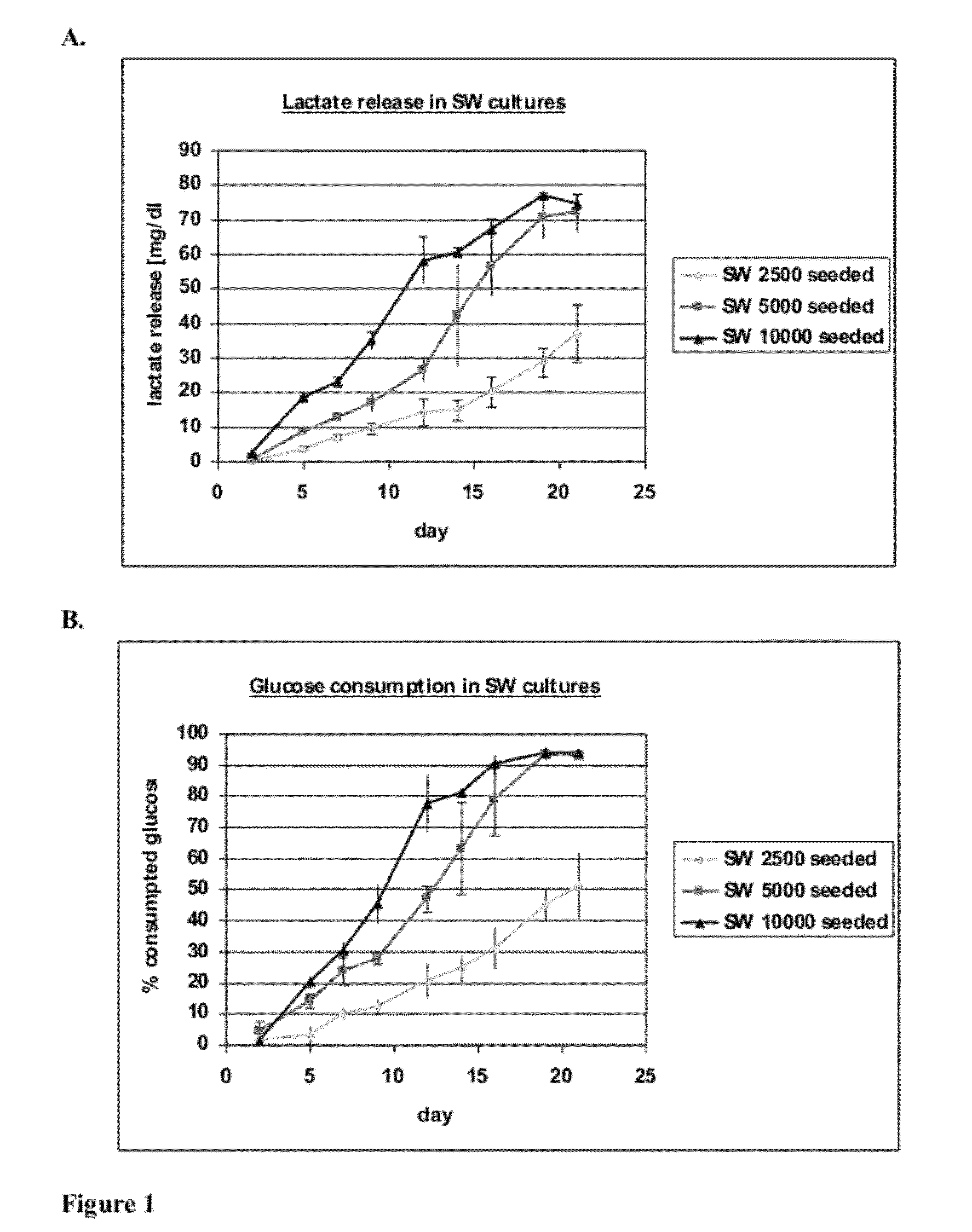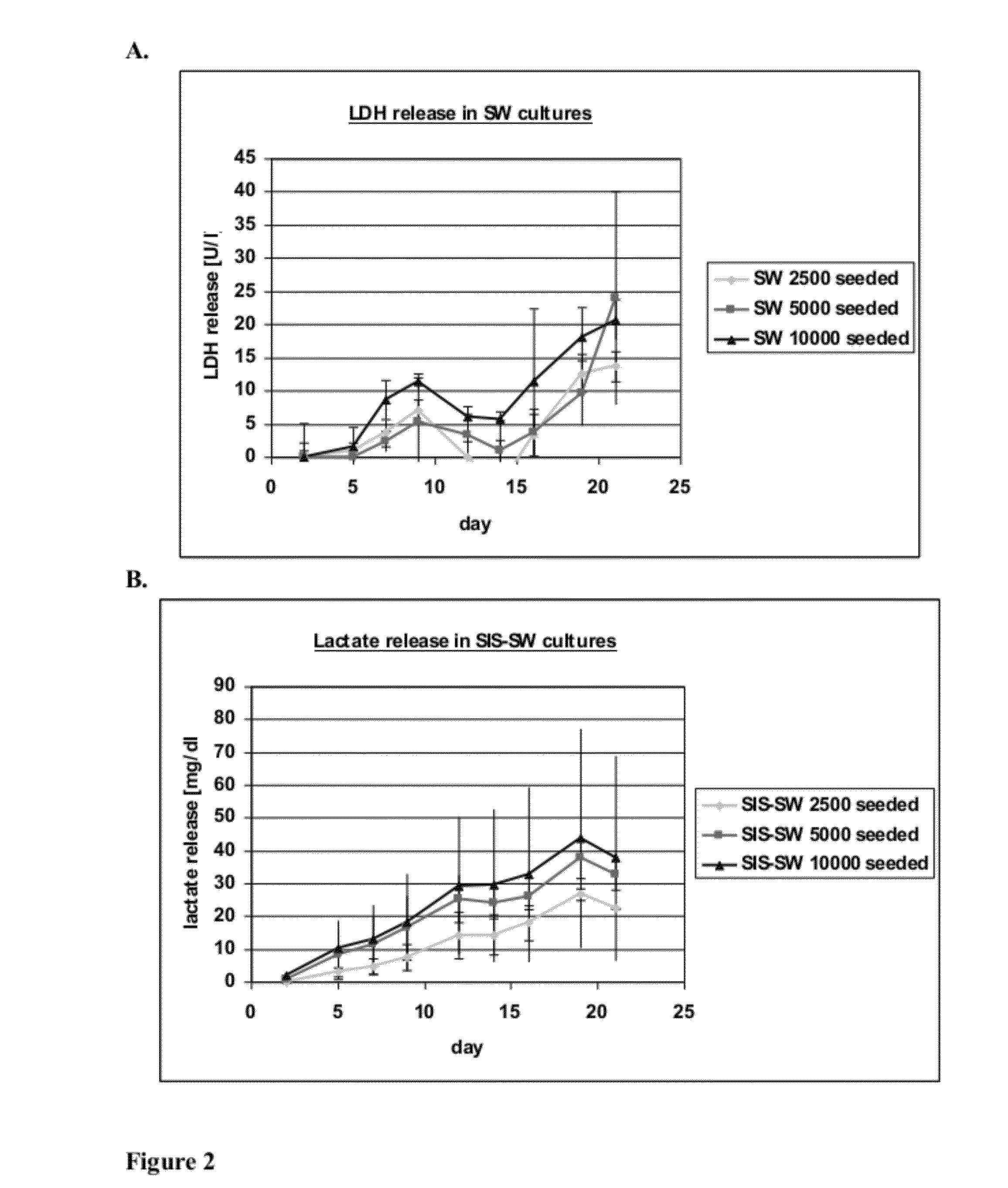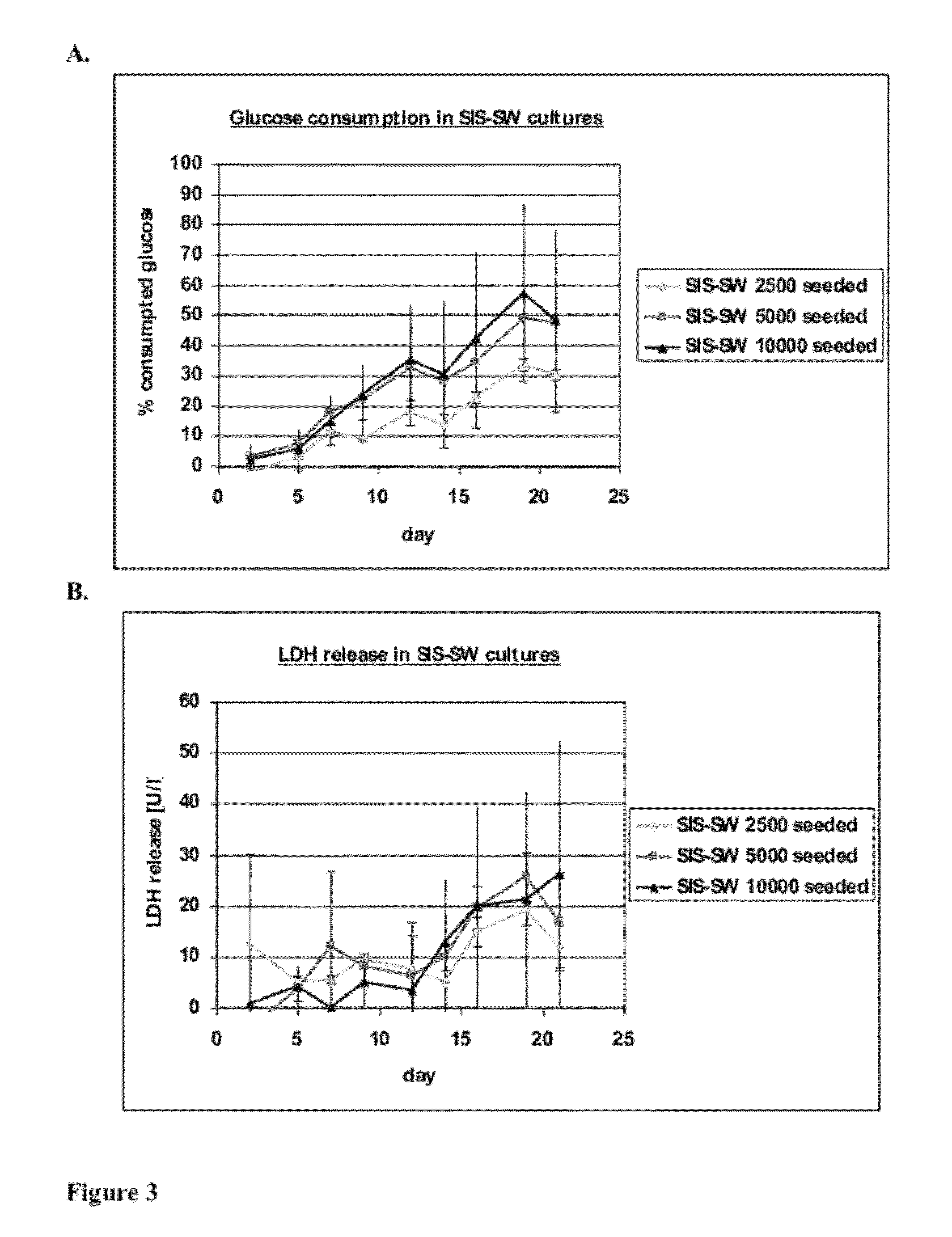Bioartificial proximal tubule systems and methods of use
- Summary
- Abstract
- Description
- Claims
- Application Information
AI Technical Summary
Benefits of technology
Problems solved by technology
Method used
Image
Examples
example 1
Seeding and Differentiation of hKDC on Extracellular Matrix Scaffolds
[0095]This experiment tests the attachment, growth and differentiation of human kidney-derived cells (“hKDC”) on various configurations of extracellular (i.e decellularized) matrix scaffolds as well as to the traditional culture on collagen-coated transwells.
[0096]hKDC at passage 4 were seeded onto three different scaffold configurations and on transwells (Corning, Corning N.Y.). The cells were cultivated over a time period of three weeks with REGM™ renal epithelial growth medium (Lonza, Walkersville Md.). Each scaffold configuration was tested with three different cell concentrations: 2.5×103, 5×103, and 1×104 cells. The configurations tested were: 1) collagen sandwich culture; 2) collagen-SIS sandwich culture; 3) SIS monolayer culture; and 4) collagen-coated transwells.
[0097]Collagen Sandwich Cultures
[0098]hKDC were cultivated between two collagen gel layers in 24-well plates. The bottom gels were cast by first m...
example 2
Optimization of Cell Seeding Concentration of hKDC on Decellularized Scaffolds
[0110]Example 1 demonstrated that cells seeded onto two-dimensional decellularized scaffolds without collagen formed a confluent epithelial monolayer expressing proximal tubule markers after three weeks of culture. The following experiments were conducted to optimize the cell seeding density and attempt to reduce the culture period necessary for formation of the monolayer.
[0111]Scaffolds were prepared by decellularizing segments of small intestine submucosa (SIS) as described in Example 1. hKDC at passage 4 were seeded onto the SIS scaffolds at three different concentrations (1×104, 5×104, and 1×105 cells / well) and cultivated for three weeks with REGM™ renal epithelial growth medium (Lonza, Walkersville). Samples were removed for histological analysis after two and three weeks and were fixed with Bouin's fixative for 1 hour. Thereafter they were washed in water for at least 4 hours and embedded into paraff...
example 3
Immunohistochemistry of p-glycoprotein-1
[0118]Scaffolds were prepared by decellularizing segments of small intestine submucosa (SIS) as described in Example 1. hKDC at passage 4 were seeded onto the SIS scaffolds at 5×104 cells / scaffold and cultivated for three weeks with REGM™ renal epithelial growth medium (Lonza, Walkersville). Samples were removed for histological analysis after three weeks and fixed with Bouin's fixative for 1 hour. Afterwards, they were washed in water for at least 4 hours and embedded into paraffin. Subsequently, 3 μm thick slices were prepared. Immunohistochemistry (IHC) was performed to confirm the expression of p-glycoprotein-1 (pgp-1 aka MDR1), which is an efflux transporter expressed by proximal tubule cells. Target retrieval of deparaffinized sections was achieved by enzymatic treatment with proteinase K, by heating in citrate buffer pH 6 (Dako, #S2369), or by heating in Tris / EDTA buffer pH 9 (Dako, #S2367). A blocking step with 3% hydrogen peroxidase w...
PUM
 Login to View More
Login to View More Abstract
Description
Claims
Application Information
 Login to View More
Login to View More - R&D
- Intellectual Property
- Life Sciences
- Materials
- Tech Scout
- Unparalleled Data Quality
- Higher Quality Content
- 60% Fewer Hallucinations
Browse by: Latest US Patents, China's latest patents, Technical Efficacy Thesaurus, Application Domain, Technology Topic, Popular Technical Reports.
© 2025 PatSnap. All rights reserved.Legal|Privacy policy|Modern Slavery Act Transparency Statement|Sitemap|About US| Contact US: help@patsnap.com



